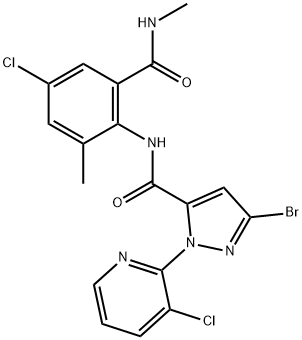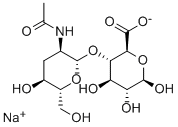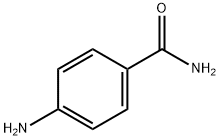DEETSolutioninMethanol , 100 μg/mlinmethanol, uncertainty 3%
Synonym(s):
m-Toluic acid diethylamide;N,N-Diethyl-m-toluamide;N,N-Diethyl-3-methylbenzamide;DEET
CAS NO.:
Empirical Formula: C12H17NO
Molecular Weight: 191.27
MDL number: MFCD00009046
EINECS: 205-149-7
| Pack Size | Price | Stock | Quantity |
| 1.2ml | RMB271.20 | In Stock |
|
| others | Enquire |
PRODUCT Properties
| Melting point: | -45 °C |
| Boiling point: | 111 °C1 mm Hg |
| Density | 0.998 g/mL at 20 °C(lit.) |
| vapor density | 6.7 (vs air) |
| vapor pressure | <0.01 mm Hg ( 25 °C) |
| refractive index | n |
| Flash point: | >230 °F |
| storage temp. | room temp |
| solubility | DMSO (Slightly), Ethyl Acetate (Slightly), Methanol (Slightly) |
| pka | -1.37±0.70(Predicted) |
| form | Liquid |
| color | Clear |
| Specific Gravity | 0.996 |
| Odor | mild bland odor |
| Water Solubility | NEGLIGIBLE |
| Merck | 14,2856 |
| BRN | 2046711 |
| Stability: | Stable. Combustible. Incompatible with strong oxidizing agents, strong acids, strong bases. Hydrolyzes slowly in water. |
| InChIKey | CXVBTGKUSLNJQZ-UHFFFAOYSA-N |
| CAS DataBase Reference | 134-62-3(CAS DataBase Reference) |
| NIST Chemistry Reference | Diethyltoluamide(134-62-3) |
| EPA Substance Registry System | N,N-Diethyl-m-toluamide (134-62-3) |
Description and Uses
DEET was first developed and patented by the US Army in 1946. It was approved for general public use by the US Environmental Protection Agency (EPA) in 1957 and was reregistered in 1998. It has been estimated that more than 1.8 million kg (~4 million pounds) of DEET are used in the United States every year in more than 225 registered products. DEET is often sold and used in lotions or sprays with concentrations up to 100%. However, the Center for Disease Control recommends only 30–50% DEET to reduce the incidence of vector-borne disease transmission. Registered products must contain at least 95% of the meta-isomer, but small amounts of the more toxic ortho-isomer and the less toxic para-isomer are permitted.
DEET is used as an insect repellent.
Safety
| Symbol(GHS) |  GHS07 |
| Signal word | Warning |
| Hazard statements | H302-H315-H319-H412 |
| Precautionary statements | P264-P270-P273-P301+P312-P302+P352-P305+P351+P338 |
| Hazard Codes | Xn |
| Risk Statements | 22-36/38-52/53 |
| Safety Statements | 61 |
| RIDADR | 2810 |
| WGK Germany | 2 |
| RTECS | XS3675000 |
| TSCA | Yes |
| HazardClass | 6.1(b) |
| PackingGroup | III |
| HS Code | 29242995 |
| Hazardous Substances Data | 134-62-3(Hazardous Substances Data) |
| Toxicity | LD50 orally in male rats (ml/kg): 2.43; in female rats: 1.78; dermally in rabbits: 3.18; LC50 by inhalation in rats (mg/l): 5.95 (U.S. EPA) |





